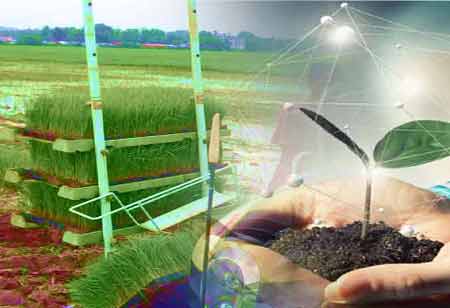Thank you for Subscribing to Agri Business Review Weekly Brief
Significance of Satellite Monitoring for Crop Protection and Insurance
Crop insurance protects farmers from a variety of financial and production risks.

By
Agri Business Review | Monday, January 09, 2023
Stay ahead of the industry with exclusive feature stories on the top companies, expert insights and the latest news delivered straight to your inbox. Subscribe today.
Satellite imagery can leverage crop insurance carriers to determine whether a particular area is suitable for harvesting.
FREMONT, CA: Crop insurance protects farmers from a variety of financial and production risks. With satellite data, crop insurance firms can examine the status of crops before and after losses with greater precision. It enables them to develop more effective and profitable policies. In turn, farmers and agribusiness consultants can use crop insurance benefits to enhance the quality of agricultural operations and safeguard against production losses. Crop Monitoring helps analyze the product's state, providing agricultural insurance firms numerous advantages. Insurers can resolve issues with the aid of satellites and multitasking operating systems.
Evaluation and forecasting of field productivity: Crop Monitoring provides multiple methods for evaluating a crop's current and potential yield simultaneously. The zoning on crop monitoring is also essential for crop insurance. It is measured using satellite technology to estimate the density and health of vegetation. Coverage firms can evaluate the entire area of productive segments and determine the amount of vegetation in various field parts. This indicator specifies the actual productivity of the plots by allowing users to choose the number of years that different areas of a field had higher or lower vegetation.
Monitoring the plants' moisture content: Detection plant water stress promptly can prevent specific detrimental effects. The moisture index indications vary based on the cultivar and the current developmental stage. It may also identify the agricultural regions with the most critical moisture levels. With remote sensing, crop insurance firms may predict waterlogging concerns, forecast droughts, and assess damage in the event of field-wide accidents by analyzing this data remotely.
Accurate field area measurement: The software automatically computes the current field's area in a few seconds. Crop Monitoring utilizes satellite photos, and the precision of measurements is independent of the size of the field. The technology enables the delineation of the study area's boundaries on an interactive map for increased clarity. Thus, agricultural crop insurance firms can precisely determine the insured object's size for subsequent financial compensation calculations.
Scouting maintains and shares documents in a single application: This tool will assist crop insurance providers in limiting field inspections to only trouble locations. It allows them to address internet problems in a matter of seconds. The crop monitoring platform combines satellite data and the mapping of vegetation. The data will be immediately accessible once the internet connection gets restored. Providers of crop yield insurance can directly monitor task completion status within the system and download excel files. Crop Monitoring enables the storage and constant accessibility of all data in a single location.





